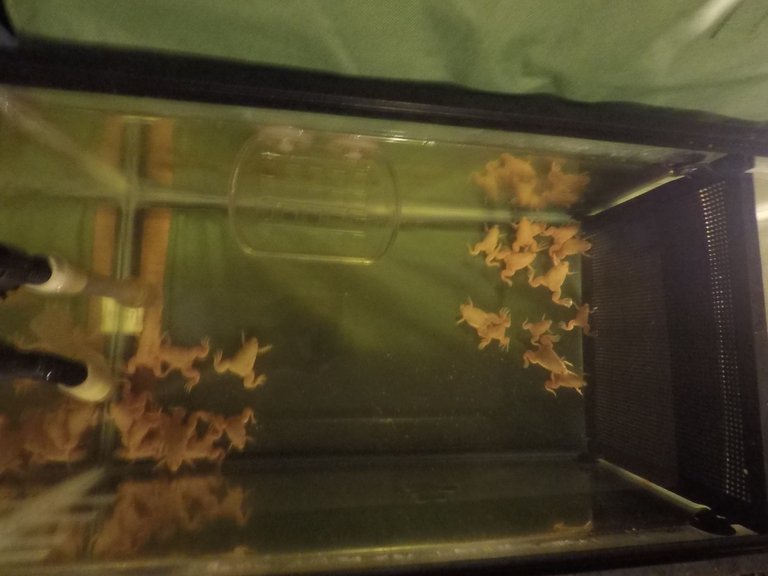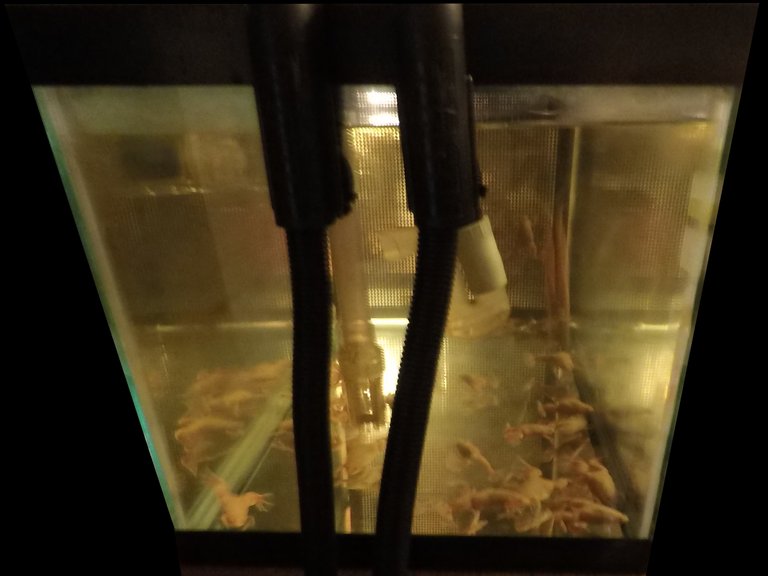Day 150
One observation I made last year when my oldest frog, Thomas, was still alive is that African Clawed Frogs have a nostril twitch that occurs rhythmically once their noses are below water. The reason I even noticed it the first time is that Thomas had a benign tumor on his nose that would twitch along with it, likes sticking a ribbon on a running fan. For years I had written it off as movement of the water until I sat down and just stared at am head-on for several minutes and saw the concurrent nostril itself. I then went around the tank and observed the phenomenon in both of the other frogs, Tiny and Scout. It's extremely subtle and took me almost 15 years to finally notice it. I imagine it has some benefit to keeping the nostrils closed while holding their breath as I cannot think of another use for it nor can I find any mention of it in scientific literature on them despite African Clawed Frogs being model animals for scientific research for decades now.
One funny thing about the frogs is that regardless of whether they can resist the water current or not, they like to allow themselves to be carried to the current 'deadzones' where the water flow is weakest. This can be somewhat helpful as the locations the frogs congregate in when there are now hiding spots will be the exact areas that the waste you want to siphon out of the tank regularly will gather.
If I were to do this again, there are several improvements I would make for the next time:
Firstly, I'd double the tanks, specifically, the 10 and 20 gallon tanks.
Second, I'd keep a spare tank to transfer the tadpoles into to allow for a monthly full cleaning
Third, I'd make sure to have enough water containers to perform 50% water changes on all used tanks
Fourth, I'd keep the tanks in an area directly in front of an air conditioner
Additionally, I'm going to look into sump filters to see how they may be utilized in future set ups.
One potential way to make the daily cleaning of the froglet tanks easier is to make all of the decor PVC tubes. Using silicone to bind some of the tubes together in a row could also help make cleaning quicker.
Current Totals:
8 - 10 gallon (Tadpole Tank)
34 - 20 gallon (Frog Tank) [9 froglet, 25 juvenile]
Next Days


When your frogs are grown, where do they go? I've been reading your past posts and am fascinated.
A family friend runs an aquatic wholesaling business that sells exclusively to local aquatic stores across the region. I decided to keep two after bringing in the final group.
So these are hobbyists who get the turtles? They'll be pets?
I meant to say frogs--working on a piece with turtles--have turtles on the brain:)
Yes, for ethical reasons, the wholesaler only supplies local independent pet stores. None of the frogs are sent for experimentation or anything like that (labs/universities usually buy from xenopus.com or have their own in-house program, especially now that they're no longer used in pregnancy test and are primarily used in embryonic experiments).
Thank you! I respect and appreciate that :)